
Air Purifiers for Allergy & Asthma
Remove airborne allergy and asthma triggers that other air purifiers leave behindwith AllerAir's activated carbon + HEPA filtration system.
-
Limited Time Offer
AirMedic Pro 5 Air Purifier
Regular price SALE $509.98 USDRegular priceUnit price / per$699.98 USDSale price SALE $509.98 USDSale -
Limited Time Offer
AirMedic Pro 5 Plus Air Purifier
Regular price SALE $594.98 USDRegular priceUnit price / per$799.98 USDSale price SALE $594.98 USDSale -
General Purpose Air Purifier with 560 CFM
Air Medic Pro 6 Air Purifier
Regular price SALE $594.98 USDRegular priceUnit price / per$799.98 USDSale price SALE $594.98 USDSale -
Home & Office Filtration with More Filtration Capacity
AirMedic Pro 6 Plus Air Purifier
Regular price SALE $679.98 USDRegular priceUnit price / per$899.98 USDSale price SALE $679.98 USDSale
Our Allergy & Asthma Air Purifiers: Select by Filtration Depth and Unit Size
- Super HEPA filter that removes up to 99.99% of fine airborne allergens
- A robust industrial design allows for 24/7operation. No digital parts to set or repair, just a simple plug and play design for worry-free operation.
- UV filtration available for the enhanced filtration of airborne viruses and bacteria
-

Remove Airborne Dust and Allergens
Remove up to 99.99% of fine airborne allergens like dust, insect waste, dander and pollen with Super HEPA or medical-grade filtration.
-

Remove Airborne Chemicals & Odors
The deepest activated carbon filters in the industry to remove the chemicals and odors that can irritate sensitive lungs.
-

Easy to Maintain
Robust industrial design for reliable, continuous 24/7 operation. Change pre-filters in seconds with no tools.
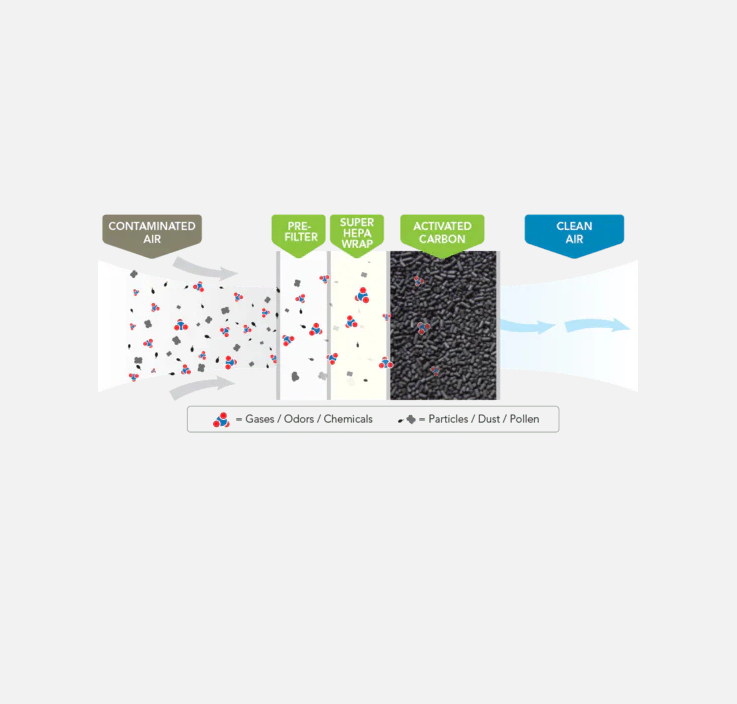
How Does an AllerAir Air Purifier Work?
An AllerAir general purpose air purifier cleans indoor air in several steps:
- A pre-filter removes larger particles
- The HEPA traps 99.97% of fine airborne particles like dust and allergens
- The deep-bed activated carbon filter adsorbs airborne chemicals, gases and odors
While HEPA filters are fairly standard, activated carbon filters can vary in quality and effectiveness. Activated carbon works like a sponge to soak up airborne chemicals, gases and odors. The capacity of that “sponge” depends on its depth and size. The more activated carbon used in an air purifier, the more chemicals, gases and odors it can adsorb.

Chemicals and Sensitive Lungs
Chemicals and odors are often overlooked as a trigger for sensitive lungs, yet consider the amount of fragrances, chemical cleaners and personal grooming products we use and store in our homes.
These products along with other items that off-gas chemicals like furniture, flooring, shower curtains, mattresses, dry-cleaning, packaging, home electronics and more contribute to poor indoor air quality that can trigger allergies, asthma and affect sensitive lungs.
That's why AllerAir air purifiers that are recommended for allergy and asthma triggers are designed with a multi-stage filtration system that target not just dust, pollen and dander but the chemicals and odors that other air cleaners leave behind for you to breathe.

Facts About Indoor Air Quality
The World Health Organization reports air pollution is now the world’s largest single environmental health risk.
Most people spend up to 90% of our day indoors often breathing stale all filled with dust and other pollutants
Researchers have linked poor air quality to cardiovascular diseases, respiratory diseases, acute respiratory infections, chronic obstructive pulmonary diseases and cancer
Young children, the ill and the elderly are most affected in the short term by poor indoor air, everyone is at risk for long term complications
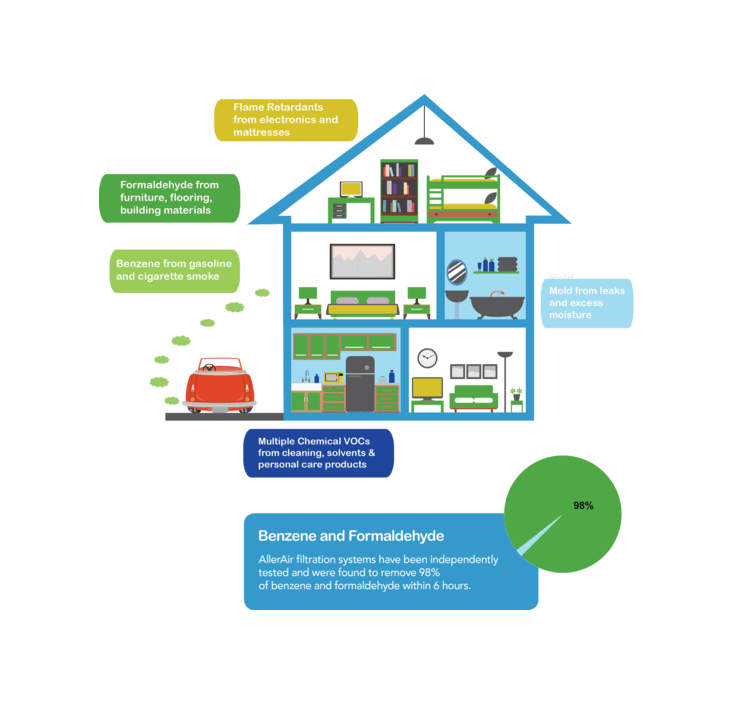
Common Household Pollutants
Our indoor air is a complex mix of the dust, insect waste, chemicals and odors. Many pollutants are by-products of the things we use and the materials used to build our homes and furniture.

Recent posts from clean air news
-
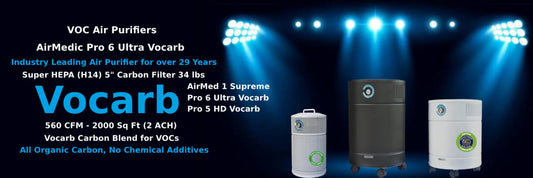
Best Air Purifiers for Wildfire VOCs
The Los Angeles Wildfires that swept through Southern California, The Palisades Fire in Pacific Palisades and Eaton Fire in Altadena are one of the worst natural disasters in California history....
Best Air Purifiers for Wildfire VOCs
The Los Angeles Wildfires that swept through Southern California, The Palisades Fire in Pacific Palisades and Eaton Fire in Altadena are one of the worst natural disasters in California history....
-

Product of the Month: AirMedic Pro 6 Plus Vocar...
The AllerAir AirMedic Pro 6 Plus Vocarb air purifier is the flag ship model of the legacy 6000 series Air Purifier, formerly known as the 6000 D Vocarb unit. The AirMedic Pro 6 Plus...
Product of the Month: AirMedic Pro 6 Plus Vocar...
The AllerAir AirMedic Pro 6 Plus Vocarb air purifier is the flag ship model of the legacy 6000 series Air Purifier, formerly known as the 6000 D Vocarb unit. The AirMedic Pro 6 Plus...
-
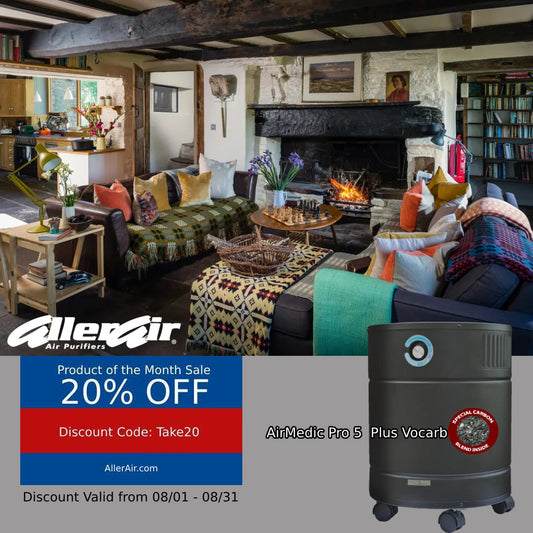
Product of the Month: AirMedic Pro 5 Plus Vocar...
The AllerAir AirMedic Pro 5 Plus Vocarb air purifier is the flag ship model of all AllerAir Air Purifiers formerly known as the 5000 D Vocarb unit. The AirMedic Pro...
Product of the Month: AirMedic Pro 5 Plus Vocar...
The AllerAir AirMedic Pro 5 Plus Vocarb air purifier is the flag ship model of all AllerAir Air Purifiers formerly known as the 5000 D Vocarb unit. The AirMedic Pro...
-
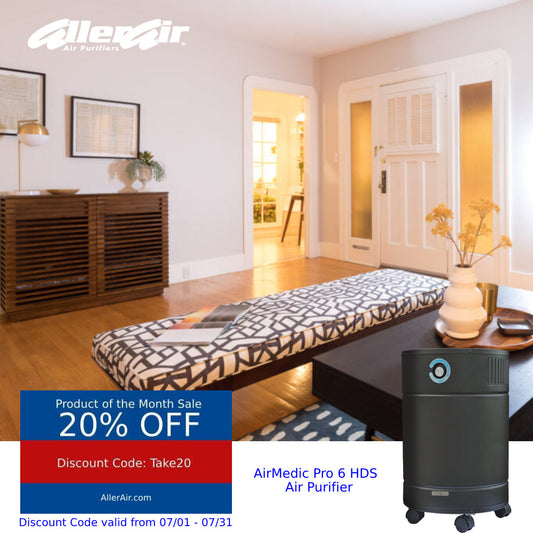
Product of the Month: AirMedic Pro 6 HDS Smoke ...
The AirMedic Pro 6 HDS Smoke Air Cleaner is a high end air purifier designed and manufactured to filter smoke and harmful VOCs from wildfires. The Pro 6 HDS unit comes...
Product of the Month: AirMedic Pro 6 HDS Smoke ...
The AirMedic Pro 6 HDS Smoke Air Cleaner is a high end air purifier designed and manufactured to filter smoke and harmful VOCs from wildfires. The Pro 6 HDS unit comes...











